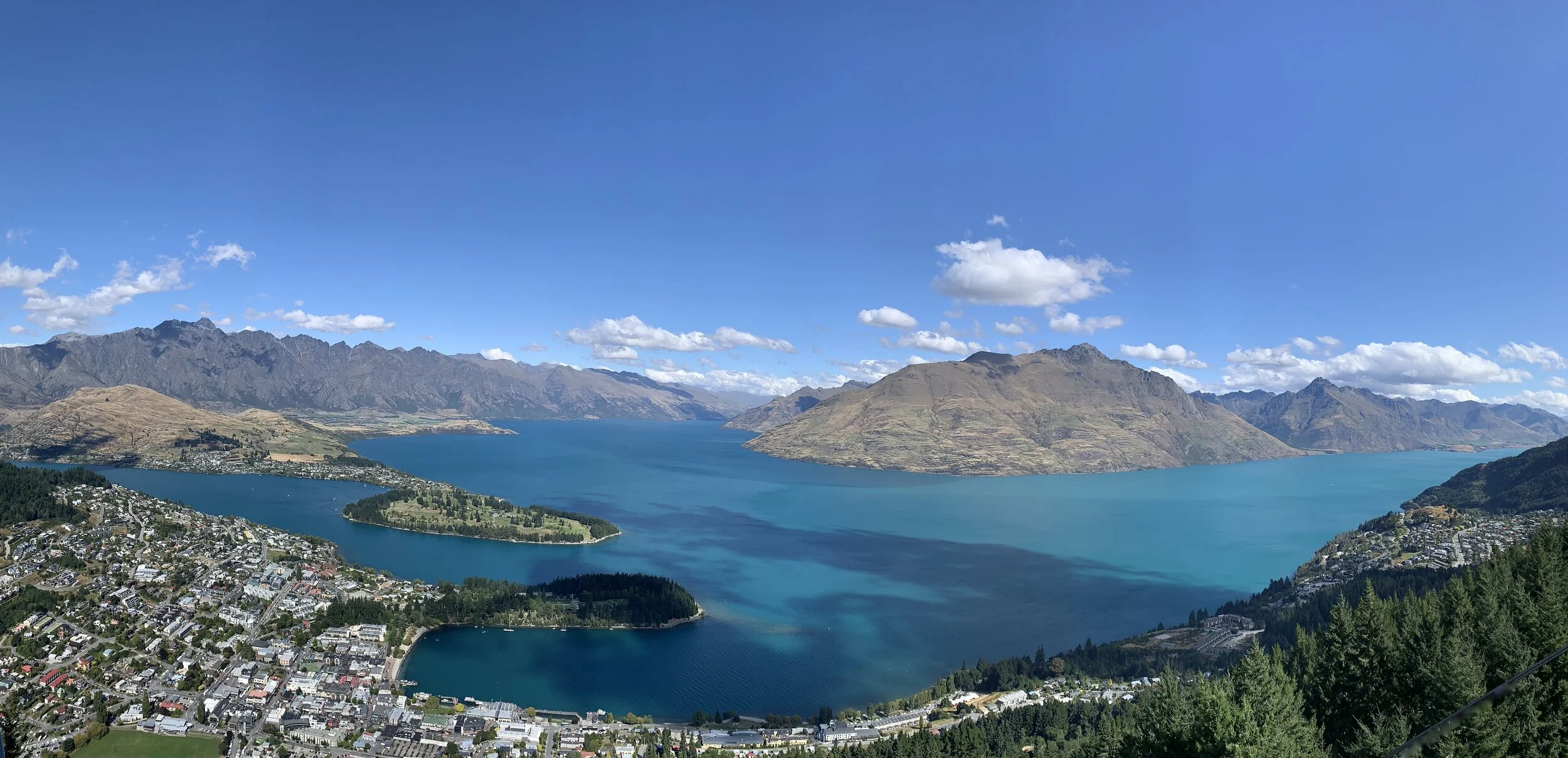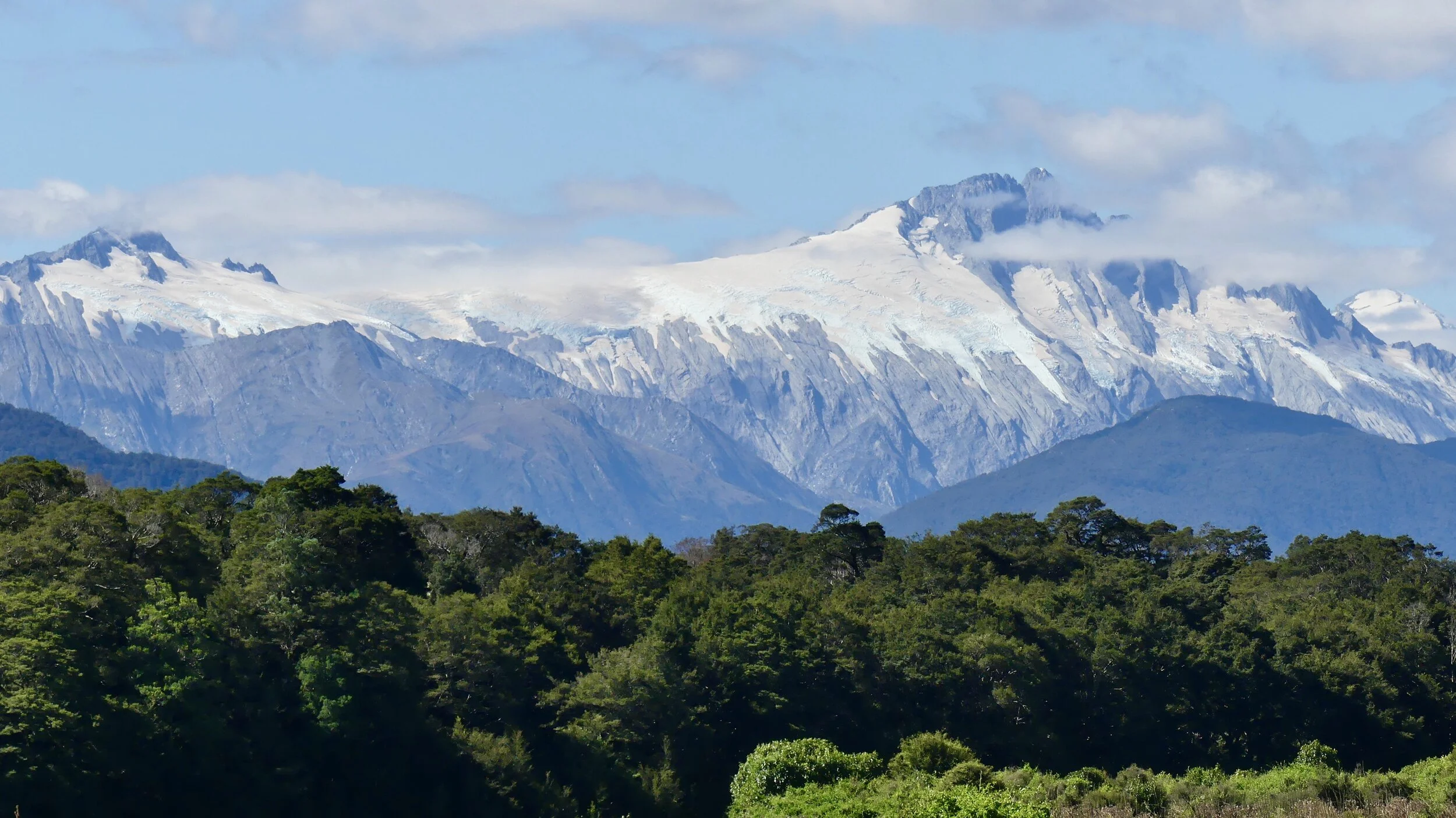Queenstown, then
How do you follow Doubtful Sound? With what? Where else could be as alluring, remote, devoid of settlement, almost unspoilt? Something completely different, perhaps?
The travel planner feared for her job: up next was Queenstown. Of all the destinations on our South Island tour, Queenstown was the one we were visiting so we could say we’d been. I doubted it would be our kind of place: a bit relentless, hyperactive, partytown. It’s a resort. We like deserted wilderness; it doesn’t even have to be pretty.
The route from our last stop, Te Anau, was via The Key, Mossburn, Five Rivers, Athol and Kingston. Unusually, I didn’t take any photographs until we reached Lake Wakatipu, an elongated Z-shaped lake on which Queenstown sits in a corner, roughly half-way. Somehow, I missed The Remarkables (see below).
Lake Te Anau
Lake Wakitipu
Someone’s moving house
There’s no doubt Queenstown has beautiful views: down by the lakeside; or from the top of Ben Lomond (there’s a cable car if you’re short of time or breath). To combine them with adrenaline-charged activities, choose from jet boating, whitewater rafting, skydiving, hang gliding, paragliding, parasailing, bungee jumping and ziplining, as well as things you’d expect such as tramping (hiking), riding or 4x4 touring. Queenstown is, by its own publicity, adventure capital.
We ate well at Rātā in Ballarat Street; shopped in interesting boutiques in Queenstown’s compact centre (which included a rock shop); and dropped into several cafes.
The best pedestrian crossing
A mighty big cedar in the town centre
There are snow fields in The Remarkables range, making Queenstown a year-round resort. The town developed as a tourist destination from the early 1980s.
Northern end of The Remarkables
The Remarkables flanking the southern arm of Lake Wakatipu
Despite my initial scepticism, there were pleasant surprises in Queenstown: Kiwi Birdlife Park in Brecon Street was one. I’d rather not see wildlife at all than view it in cages or far-too-small compounds. Opportunities to view New Zealand’s unique birds may be few and far between, however, so grab them while you can.
Portrait of a Kea
What they say about Keas
The South Island Kākā was once regarded as Chief of all birds by Māori. These days, the nectar- and insect-loving bird is only found in extensive stands of native forest, where large old trees provide hollows for nests and a good supply of insects. If these native forests were lost, the Kākā’s days would be numbered. Happily, the Park’s conservation work includes a breed-for-release programme for the Kākā.
Toa (above) is a New Zealand Falcon who was brought to the Park – a wildlife rehabilitation centre – after being shot by a farmer. Toa’s wound didn’t heal well enough for him to be released. He will likely spend the rest of his days in solitary because female falcons are bigger and stronger, so there’s a risk one would kill him if she joined him in the enclosure. The notice said, however, that there are wild falcons in the area and they regularly pay Toa a visit. I hoped so.
The Morepork, above left, is New Zealand’s only native owl. Equipped with excellent hearing and night vision, it too was originally a native forest hunter. It has adapted better than most to a changing environment, and these days can be spotted in parks and pine plantations. The Tui, above right, is a skilled singer and mimic and is among New Zealand’s most recognisable birds as a result of its prominent white throat tufts. This Tui has a broken wing, so the Park is his permanent home.
Birds that hail from subantarctic islands may exhibit peculiar habits. The nocturnal Campbell Island Teal, one of the rarest ducks in the world, doesn’t fly but does climb rocks.
I asked a man if there were silver ferns in the Park, and he pointed me in in the right direction. In spite of it being the country’s emblem, with a distinctive elongated leaf shape as well as a silver underside, we had previously failed to identify them in the wild. But here they were.
More than 15,000 native trees and shrubs have been planted in the Park since it came into being in 1986. The area was used for dumping rubbish until the Wilson family leased the land with the intention of clearing it of junk and rampant weeds so they could plant a 5-acre oasis in the middle of town. The planting continues and the Park funds this plus its conservation work through admissions, shop sales, donations and the help of many volunteers. All the species are part of managed programmes through New Zealand’s Department of Conservation. (Imagine having a Department of Conservation, Australia. How good would that be?)
Fern fest with a difference
There are daily ‘conservation shows’ which introduce you to some of the Park’s more outgoing residents. Here we met a Tuatara, which is not a lizard but an ancient order of reptile going back at least 220 million years, almost to the dinosaurs.
Tuatara
Morepork
Last, and anything but least, you can have an encounter with a North Island Brown Kiwi in one of the Park’s Kiwi houses. Feel your visually impaired way into the dark for a glimpse – directed by a wildlife keeper, thankfully – of the hyper-shy nocturnal bird that is probably the most renowned of New Zealand’s feathered weirdos. Kiwis were once to be found all over the country, but have fallen prey to introduced species and are now in serious decline. The Park’s Kiwis are bred for release into predator-controlled areas. No pictures, obvs.
When in Queenstown, be sure to take a breather and chill for a bit with some of the planet’s most extraordinary birds and their friends. They’re doing good work at Kiwi Bird Park, so if you can afford the activities on offer in this town, perhaps you’d like to help out these dedicated conservationists with a few dollars more.
From there, we walked to and through Queenstown (botanic) Gardens to Lake Wakatipu. Our bird extravaganza wasn’t over: a pair of Paradise Shelducks showed off on a small lake. We’d seen them in Doubtful Sound, but they were far away and in low light. Most unusually, the female is more striking than the male, with her white head and chestnut body. It didn’t surprise me: this was New Zealand!
The following day we left town for South Island’s west coast. We detoured almost immediately to Arrowtown so my friend could procure Otago Pinot Noir from a recommended source. It’s a pretty little town (click on images to enlarge).
Back on highway 6, Arrow Junction lookout detained us with views back to Queenstown. I noticed a plane climbing and banking in front of yet another stunning dark-blue mountain backdrop. I decided I wanted to photograph a plane on approach and landing. But we didn’t have all day, and soon headed back to the car, when suddenly a man – who’d obviously been listening in – shouted, ‘Your plane’s coming!’.
Taking off…
…and coming in to land
‘Good morning, ladies and gentlemen. Welcome to Queenstown.’
Finally, we were underway, turning on to Crown Range Road – the highest main road in the country – then Cardrona Valley Road to Wanaka, where we rejoined highway 6, which would take us over Haast Pass into West Coast region’s untamed wilderness.



